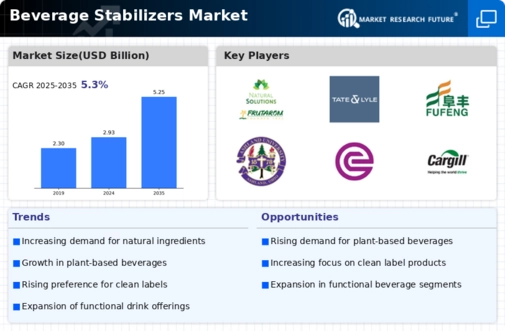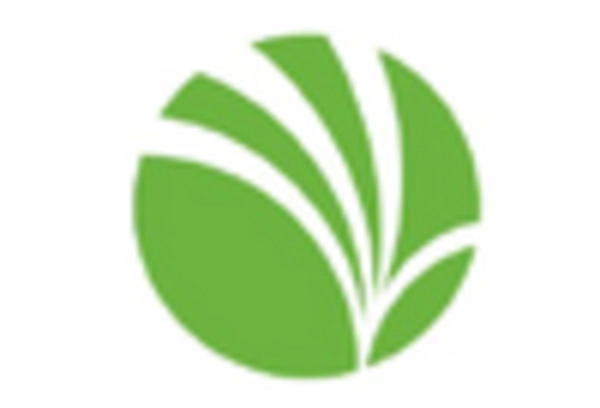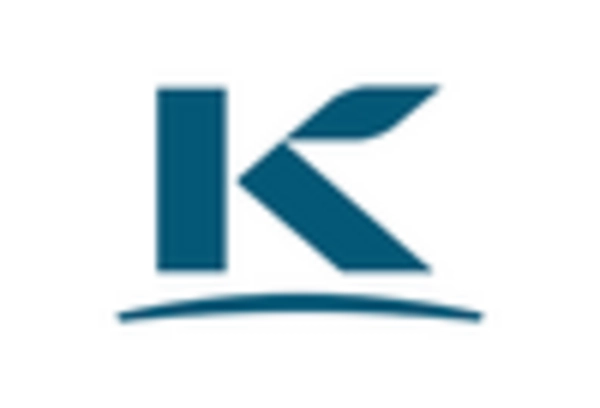Expansion of the Beverage Industry
The Beverage Stabilizers Market is benefiting from the overall expansion of the beverage industry, which encompasses a wide range of products, including soft drinks, juices, and alcoholic beverages. This growth is fueled by changing consumer lifestyles and preferences, leading to an increase in beverage consumption. Recent statistics suggest that the beverage industry is expected to reach a valuation of over 1 trillion dollars in the coming years. As the industry expands, the demand for stabilizers that can enhance product shelf life and stability becomes paramount. Beverage manufacturers are increasingly investing in research and development to create innovative stabilizers that can cater to diverse beverage formulations, thus driving growth in the Beverage Stabilizers Market.
Emerging Markets and Consumer Trends
The Beverage Stabilizers Market is poised for growth due to emerging markets and evolving consumer trends. As economies develop, there is a rising middle class with increased purchasing power, leading to higher demand for diverse beverage options. Additionally, consumers in these markets are becoming more health-conscious, seeking beverages that align with their lifestyle choices. Market analysis suggests that regions such as Asia-Pacific and Latin America are experiencing rapid growth in beverage consumption, with an expected increase of over 15% in the next few years. This trend presents opportunities for beverage manufacturers to innovate and adapt their products, thereby driving the demand for stabilizers that can ensure product quality and consistency in the Beverage Stabilizers Market.
Rising Demand for Functional Beverages
The Beverage Stabilizers Market is experiencing a notable increase in demand for functional beverages, which are perceived as healthier alternatives to traditional drinks. This trend is driven by consumers seeking products that offer added health benefits, such as enhanced hydration, energy, and nutritional value. According to recent data, the functional beverage segment is projected to grow at a compound annual growth rate of approximately 8% over the next five years. Beverage stabilizers play a crucial role in maintaining the quality and consistency of these products, ensuring that they meet consumer expectations. As manufacturers innovate to create new functional beverages, the need for effective stabilizers becomes increasingly important, thereby propelling the Beverage Stabilizers Market forward.
Increased Focus on Clean Label Products
The Beverage Stabilizers Market is witnessing a shift towards clean label products, as consumers become more conscious of the ingredients in their beverages. This trend is characterized by a preference for products that are free from artificial additives and preservatives. As a result, beverage manufacturers are seeking natural stabilizers that can effectively maintain product quality while adhering to clean label standards. Market data indicates that the clean label segment is expected to grow significantly, with a projected increase of around 10% annually. This shift not only influences the formulation of beverages but also drives innovation in the Beverage Stabilizers Market, as companies strive to develop stabilizers that align with consumer preferences for transparency and health.
Regulatory Compliance and Quality Standards
The Beverage Stabilizers Market is significantly influenced by stringent regulatory compliance and quality standards imposed by food safety authorities. These regulations ensure that beverage products are safe for consumption and meet specific quality benchmarks. As manufacturers strive to comply with these standards, the demand for effective stabilizers that can enhance product safety and stability is likely to increase. Data indicates that compliance-related costs can account for a substantial portion of production expenses, prompting manufacturers to invest in high-quality stabilizers. This focus on regulatory adherence not only drives the demand for stabilizers but also fosters innovation within the Beverage Stabilizers Market, as companies seek to develop solutions that meet evolving regulatory requirements.


















Leave a Comment